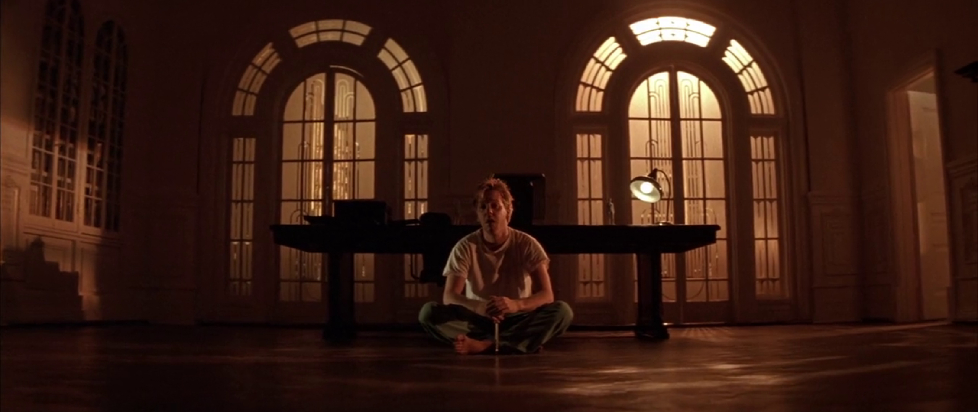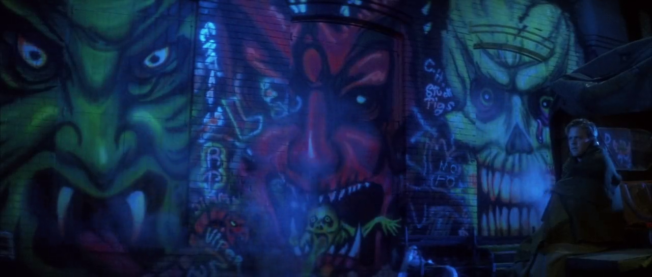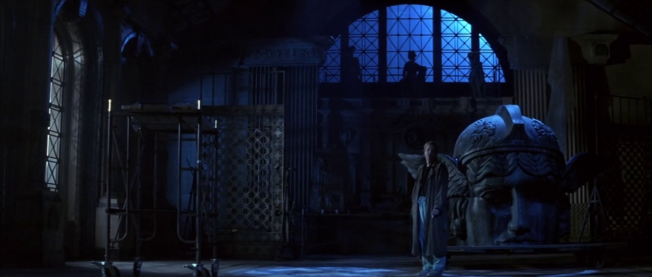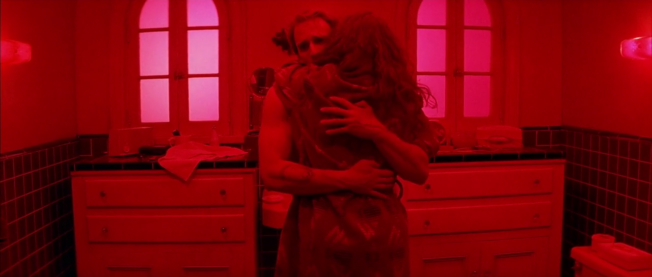
Today’s a Good Day to Die: Reliving the Past with Flatliners (1990)
“I didn’t go to medical school to kill my classmates, no matter how deranged they are.”
Kiefer Sutherland. Julia Roberts. Kevin Bacon. William Baldwin. Oliver Platt. Directed by Joel Schumacher. It is basically impossible to imagine a more 1990 movie than Flatliners, a film that I hadn’t seen in probably close to 30 years before I got the 4K Blu-ray recently released by Arrow in my mailbox for review.
So, it’s a blast from the past, but how does it hold up? Well, for starters, I remembered almost nothing from this movie, even once I started re-watching it, so this was basically like experiencing it for the first time. The plot, which was repurposed for a poorly-received 2017 sequel/remake that I haven’t seen, concerns a quintet of medical students studying at a byzantine university represented by Loyola and the Museum of Science and Industry in Chicago.
One of them (Kiefer Sutherland, of course) gets the idea of “flatlining” – dying for about a minute, and having the others revive him. Naturally, once the first excursion is successful, most of the others want to try. The problem is, it seems that they’re bringing things from their past back with them…

Despite its run time of just under two hours, Flatliners doesn’t beat around the bush. By the time we meet our cast, the plot is already underway, and the first “flatlining” happens in short order. Though there’s lots of bickering amongst their number about their various motives, there’s absolutely zero time spent exploring how the idea was hatched in the first place and the team put together.
Instead, the time is spent on overwrought melodrama and twenty-something angst as our protagonists struggle with their feelings for and toward one-another, and with the demons they have brought back with them from the other side.
I say “demons” but, let me be extremely clear, that is entirely metaphorical here. The things each person brings from the past are their own guilt at some wrong they have committed, or feel that they have committed, and there’s every reason to believe, by the end, that these manifestations are purely within their own minds.
Which would, by itself, be forgivable. Unfortunately, they are also pretty universally lousy. Here’s the thing: I’m not sure that anyone would class Flatliners as horror. And even if they did, I have argued extensively that horror does not necessarily need to be scary. So please understand that I am not coming from any place of horror gatekeeping when I say that the sequences in Flatliners are basically never the least bit scary.

Part of this is because the characters’ sins are, for the most part, milquetoast. Julia Roberts both feels guilty for and blames her father for his suicide when she was little. Kiefer Sutherland bullied a peer who then fell out of a tree to his death. Kevin Bacon was literally just mean to a kid in his elementary school. The only one who did anything recently also did something that seems far worse, despite the fact that there are two deaths involved in the others.
William Baldwin’s character is engaged to be married to a woman who lives in another town. The two seem to genuinely be very much in love. Yet, Baldwin has sex with countless women on campus, often under misleading pretenses, and films the act without their knowledge. While the film spends maybe the least amount of its running time on his misdeeds, they ring as particularly egregious and heinous to us in the present day – not least because, unlike the others, he is still doing this actively as an adult, versus some dark secret from his childhood.
In the picture’s defense, Baldwin is also the only one who suffers any significant, real-world consequence for his actions, though the punishment doesn’t seem like it necessarily fits the scope of the crime, as he simply loses his fiancé when she learns of his bad behavior.
Each of them is haunted by manifestations of their guilt. Roberts sees her dead father. Bacon is accosted on the train by the little girl he picked on, who calls him a litany of names. Sutherland gets the shit kicked out of him by the kid he bullied. Baldwin sees grainy, black-and-white images of his conquests, asking him why he did it.

While the effects of Baldwin’s visions are occasionally potent, for the most part, these visitations ring as silly rather than startling. There is nothing scary about a kid in a hoodie beating the shit out of Kiefer Sutherland. Sorry.
This is all a shame, because the rest of the movie mostly looks very good. It’s no surprise that Schumacher made the campiest of Batman movies, because there’s an extravagance to the production design here that would have been right at home in Burton’s Gotham City. Colored filters are absolutely abused. The makeshift Frankenstein lab where they conduct their “flatlining” is in a massive, baroque building that is under construction, complete with flapping plastic, a gigantic statue head in the middle of the floor, huge murals on the walls, and even a bank of rubber gloved hands in the background.
One of the “flatlining” experiments takes place on Halloween night, and the raucous party out in front of the building, with its massive bonfire and grotesque costumes, is the most atmospheric thing in the whole picture, and a reminder that, with creepier imagery tied to the experiences that they brought back from the other side, this could be something a lot more special than an artifact of 1990.
As I wrote on Letterboxd right after watching the 4K for the first time: “Imagine if we had this same movie but the ostensibly scary shit was the scary shit from Jacob’s Ladder? That would be so good.”





